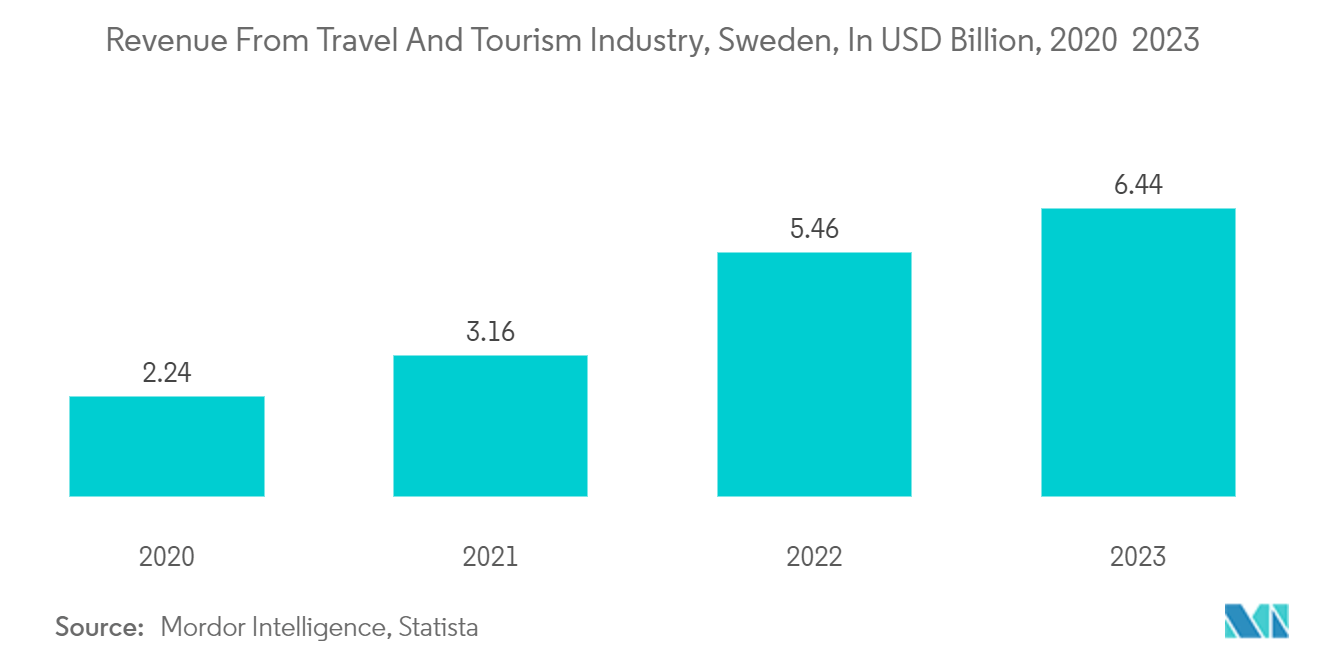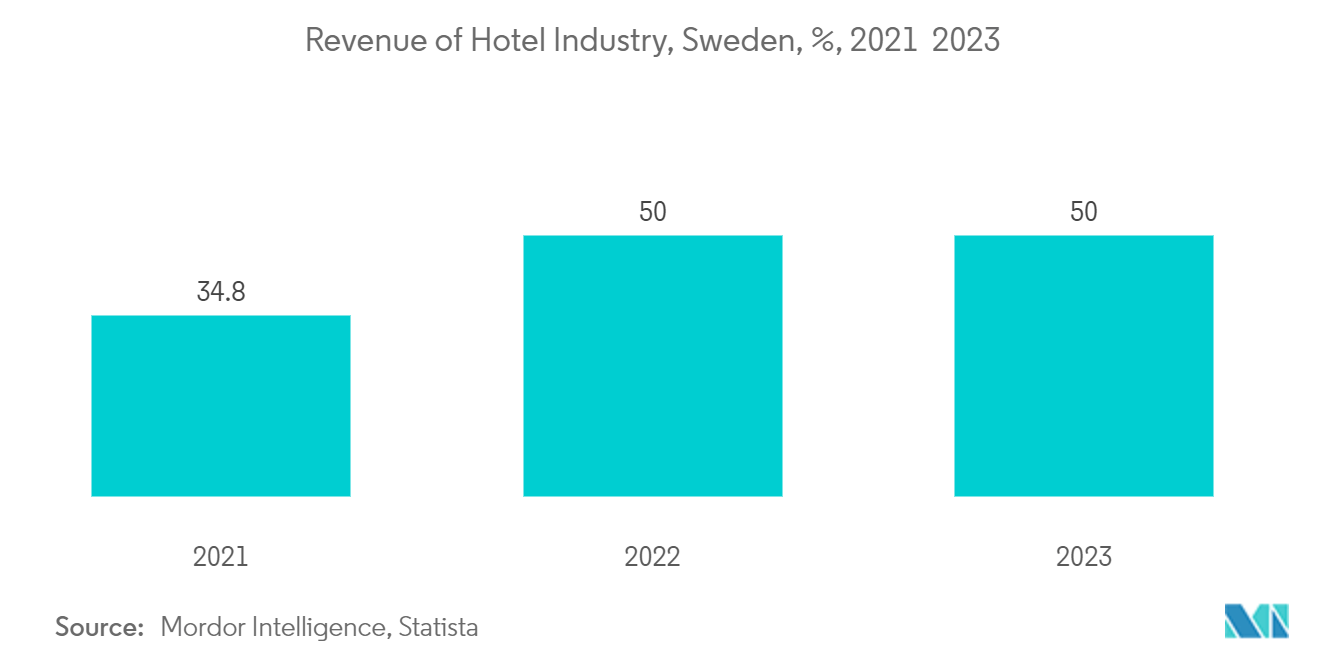Market Trends of Hospitality Industry In Sweden
Increasing Number of Foreign Visitors Are Driving the Market
- The hospitality industry in Sweden has indeed experienced an increasing number of foreign visitors in recent years, which has had a positive impact on the market. Sweden, with its stunning natural landscapes, rich history, and vibrant cities, has become an attractive destination for tourists from around the world.
- The Swedish government and tourism organizations have actively promoted the country's attractions and unique experiences to international travelers. This marketing effort has helped raise awareness and interest in visiting Sweden.
- Improved transportation infrastructure, including direct flights and efficient public transportation, has made it easier for tourists to reach various destinations within Sweden. This accessibility has played a significant role in attracting foreign visitors.
- Sweden offers a diverse range of attractions, from picturesque landscapes like the Northern Lights, the Swedish archipelago, and national parks to historic sites and cultural events. These natural and cultural assets appeal to tourists seeking memorable experiences.
- The increasing number of foreign visitors has had a positive impact on the hospitality industry in Sweden. Hotels, resorts, restaurants, and other tourism-related businesses have witnessed growth due to the higher demand for accommodation, dining, and leisure activities. This increased demand has led to the development of new hotels and the expansion of existing hospitality establishments.
- To cater to the diverse needs of foreign visitors, many hotels and tourist facilities in Sweden offer multilingual staff, cultural amenities, and services tailored to international travelers. This focus on providing a high-quality experience contributes to the overall growth of the hospitality market.

Dynamic Occupancy Rate is Challenging the Overall Revenue Growth of the Market
- The hospitality industry in Sweden, like many other countries, is influenced by various factors that can impact its overall revenue growth. One such factor is the dynamic occupancy rate, which poses challenges to the industry's revenue growth. Dynamic occupancy rate refers to the fluctuating levels of occupancy in hotels and other accommodations throughout different times of the year. In Sweden, this fluctuation can be attributed to several factors, including seasonal variations in tourism, business travel patterns, and economic conditions.
- Sweden experiences significant seasonal variations in tourism. During peak seasons, such as the summer months, when tourists flock to popular destinations like Stockholm and Gothenburg, hotels often achieve high occupancy rates and generate substantial revenue. However, during off-peak seasons, occupancy rates may decline, leading to reduced revenue and profitability.
- Business travel also plays a crucial role in the hospitality industry. Occupancy rates are influenced by corporate events, conferences, and trade shows. Fluctuations in business travel can lead to variations in occupancy levels, impacting revenue growth.
- Hotels and accommodations can diversify their target markets to attract different types of guests throughout the year. This could include targeting business travelers during weekdays and leisure travelers on weekends or offering specialized packages for different seasons. Implementing revenue management practices can help optimize pricing strategies based on demand fluctuations.
- By employing dynamic pricing models and forecasting techniques, hotels can adjust rates according to occupancy levels, maximizing revenue during peak periods and minimizing losses during low-demand periods. Collaborating with local businesses, attractions, and event organizers can help stimulate demand and attract visitors throughout the year. By working together, stakeholders can create integrated tourism experiences and drive increased occupancy rates.

